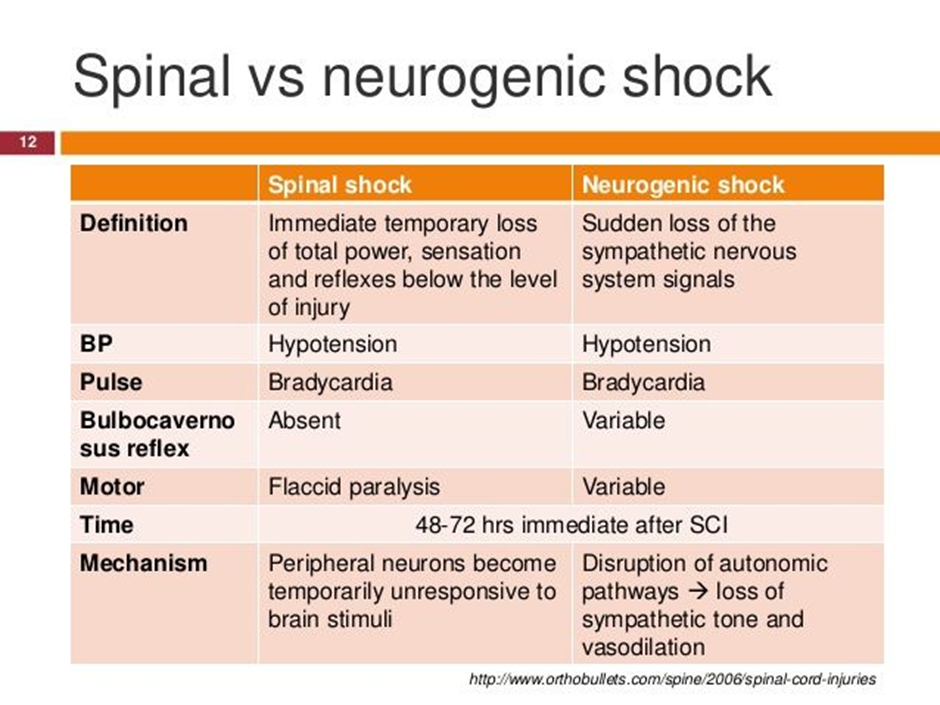A nurse is planning care for a client who has neurogenic shock following a spinal cord injury. Which of the following provider prescriptions should the nurse anticipate? (Select all that apply.)
(Select All that Apply.)
Metoprolol
Lactated Ringers intravenous fluid
Furosemide
Dopamine
Epinephrine
Correct Answer : B,D,E
Choice A Reason:
Metoprolol is incorrect. Metoprolol is a beta-blocker medication commonly used to treat conditions such as hypertension, angina, and heart failure. However, in the context of neurogenic shock following a spinal cord injury, the use of beta-blockers such as metoprolol is generally contraindicated. Beta-blockers antagonize the effects of sympathetic activation, leading to a reduction in heart rate and myocardial contractility, which can exacerbate hypotension and bradycardia, the hallmarks of neurogenic shock. Therefore, the nurse would not anticipate a prescription for metoprolol in the management of neurogenic shock.
Choice B Reason:
Lactated Ringers intravenous fluid is correct. Fluid resuscitation with isotonic crystalloid solutions such as lactated Ringers is essential to restore intravascular volume and improve perfusion.
Choice C Reason:
Furosemide is incorrect. Furosemide is a loop diuretic medication commonly used to treat conditions such as heart failure, edema, and hypertension by promoting diuresis and reducing fluid volume. However, in the context of neurogenic shock, the use of diuretics such as furosemide is generally not indicated unless there is concurrent volume overload. Neurogenic shock is characterized by hypotension due to vasodilation and decreased systemic vascular resistance, often leading to relative hypovolemia rather than volume overload. Therefore, administering furosemide could further decrease intravascular volume, exacerbating hypotension and compromising perfusion. As a result, the nurse would not anticipate a prescription for furosemide in the management of neurogenic shock.:
Choice D Reason:
Dopamine is correct. Dopamine is a vasopressor medication that acts to increase vascular tone and blood pressure by stimulating alpha-adrenergic receptors. It is commonly used in the management of neurogenic shock to augment blood pressure.
Choice E Reason:
Epinephrine is correct. Epinephrine is a potent vasopressor that acts on both alpha and beta-adrenergic receptors, leading to vasoconstriction and increased cardiac output. It is used in the treatment of refractory hypotension in neurogenic shock.

Nursing Test Bank
Naxlex Comprehensive Predictor Exams
Related Questions
Correct Answer is ["A","C","D","E"]
Explanation
Choice A Reason:
Decreased visual acuity is correct. Yes, decreased visual acuity, including issues such as poor depth perception, reduced peripheral vision, and difficulty with contrast sensitivity, can contribute to falls and head injuries in older adults.
Choice B Reason:
Motor vehicle crashes is incorrect. While motor vehicle crashes can cause head injuries in individuals of all ages, they are less common among older adults compared to younger age groups.
Choice C Reason:
Polypharmacy is correct. Yes, polypharmacy, which refers to the use of multiple medications concurrently, is a common risk factor for falls and head injuries in older adults. Certain medications, especially those with sedative or psychotropic effects, can increase the risk of falls and accidents.
Choice D Reason:
Weakness is correct. Yes, weakness, frailty, and decreased muscle strength are common age-related changes that can increase the risk of falls and subsequent head injuries in older adults.
Choice E Reason:
Chronic hypertension, particularly when poorly controlled, can contribute to an increased risk of falls in older adults through various mechanisms:Hypertension medications or the condition itself can lead to orthostatic hypotension. This can cause dizziness or lightheadedness, increasing the risk of falls.Chronic hypertension is a major risk factor for cerebrovascular disease, including strokes. These events can lead to neurological deficits such as weakness, numbness, or impaired balance, predisposing individuals to falls.
Choice F Reason:
Previous military experience is incorrect. While previous military experience may contribute to certain health conditions or injuries in older adults, it is not a common reason for head injuries specifically related to falls or accidents in this population.
Correct Answer is D
Explanation
Choice A Reason:
Dyspnea is not commonly seen in other chronic conditions of the aging older adult: This statement is incorrect. Dyspnea, or difficulty breathing, can occur in various chronic conditions commonly seen in aging adults, such as chronic obstructive pulmonary disease (COPD), heart failure, and pulmonary fibrosis, among others. Dyspnea can be a symptom of respiratory or cardiovascular issues and is not exclusive to asthma.
Choice B Reason:
Aging is associated with decreased sensitivity to medications: This statement is generally incorrect. Aging can affect drug metabolism and clearance, leading to changes in medication sensitivity. Older adults may have altered pharmacokinetics and pharmacodynamics, which can increase their sensitivity to certain medications, particularly those with sedative or CNS depressant effects. This increased sensitivity can potentially increase the risk of adverse drug reactions.
Choice C Reason:
Adverse reactions to medications in the aging older adult are lower: This statement is incorrect. While some physiological changes associated with aging may decrease the risk of adverse drug reactions, such as decreased renal function and altered drug metabolism, older adults are still at risk for adverse drug reactions due to factors such as polypharmacy, drug interactions, and increased sensitivity to medications.
Choice D Reason:
Physiological changes in the respiratory system can mimic the presence of airway obstruction: This statement is true. Physiological changes in the aging respiratory system, such as decreased lung elasticity, increased chest wall stiffness, and reduced respiratory muscle strength, can mimic the symptoms of airway obstruction seen in conditions like asthma or COPD. These changes can lead to decreased lung function, reduced exercise tolerance, and increased susceptibility to respiratory infections.
Whether you are a student looking to ace your exams or a practicing nurse seeking to enhance your expertise , our nursing education contents will empower you with the confidence and competence to make a difference in the lives of patients and become a respected leader in the healthcare field.
Visit Naxlex, invest in your future and unlock endless possibilities with our unparalleled nursing education contents today
Report Wrong Answer on the Current Question
Do you disagree with the answer? If yes, what is your expected answer? Explain.
Kindly be descriptive with the issue you are facing.
